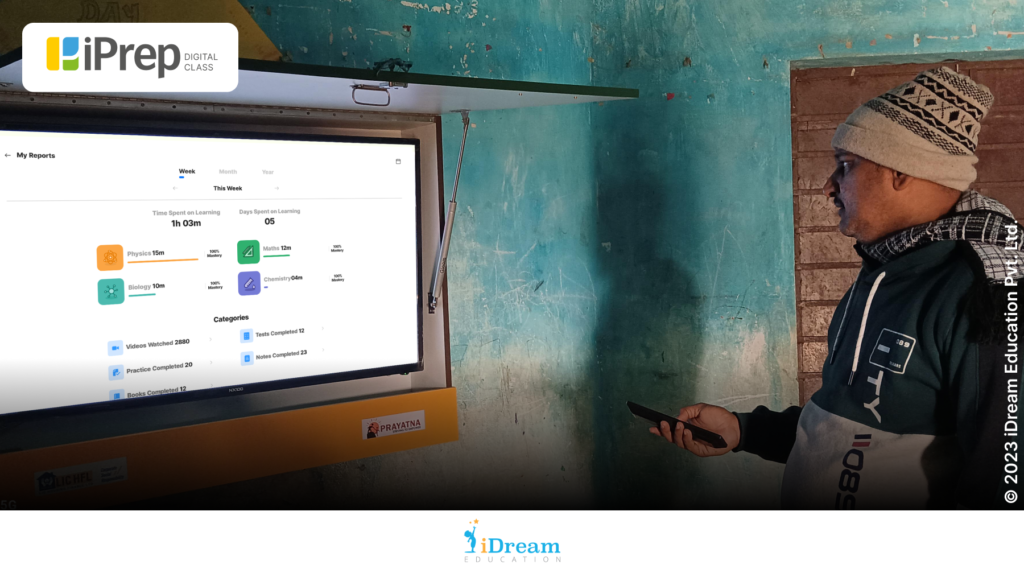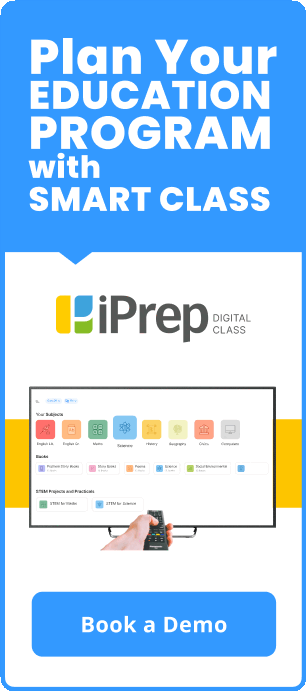Addressing Accessibility in Education: How Android Based Smart Classes Benefit Teachers and Students

In today’s rapidly evolving world, the concept of easy-to-access solutions in education has gained significant importance. With the advancements in technology, particularly the increasing use of smartphones and the availability of high-speed internet, schools are increasingly embracing innovative ways to enhance accessibility in education. One emerging solution is Android-based smart classes, offering a seamless combination of technology and education.
Even in remote villages with limited resources and no internet connectivity, the notion of smart classes might initially seem implausible. In fact, one of the latest developments in this field is android based smart classrooms and android based learning tablets without the Internet! Android-based smart classes have gained widespread acceptance from various stakeholders, including governments, corporates, NGOs, and hardware partners. Their accessibility in remote areas and the easy navigation they offer to teachers and students have solidified their position as a useful digital learning solution in education.
Let’s explore the accessibility of Android Based Smart Class in Remote Areas and for Teachers and Students.
Android Based Smart Class Aligns with the Natural Psychology of Teachers
Android-based smart class systems eliminate technological resistance among teachers by presenting a familiar interface that aligns with their natural psychology of using technology at home. With its user-friendly interface resembling smartphones and TVs commonly found in households, teachers find it easier to adapt and integrate technology seamlessly into their day-to-day teaching practices. This familiarity enhances teachers’ confidence in using smart classroom app, thereby maximizing the potential benefits of incorporating technology in the classroom.

Android Based Smart Class Enables Flexibility and Mobility
Geographical barriers often challenge integrating technology in government schools, impacting their reach and causing poor internet connectivity. However, implementing Android based TV provides a viable solution that can be easily set up at any location and used without the Internet. Merely requiring a few screws and a power plug to connect, these smart classes offer a straightforward installation process. One example of this can be seen in the schools of Uttarakhand, which are located on mountains and had no source to mount the smart TV on the wall. Undeterred, our team members ventured down the valley, procured the necessary screws, and successfully mounted the smart TV themselves, highlighting the Android-based smart class solution’s flexibility and mobility at any location.

Cost-Effectiveness of Android Based Smart Class
Cost is a crucial factor that necessitates attention. Numerous CSR projects, NGO initiatives, and Government tenders utilize Android based Smart Class model. Yet, they often require the addition of a PC or Windows box to facilitate the execution of Digital Content. Unfortunately, this supplementary hardware significantly raises expenses, complicates regular management, and ultimately undermines the advantages offered by the smart class. However, opting for smart TVs presents an affordable solution, particularly when equipped with preloaded teaching/learning content and limited to a single device. This approach ensures cost-effectiveness, allowing for more efficient implementation.
Converting Existing Setups into an Android-Based Smart Class
Using Smart Android boxes, it is easily possible to use a projector or a regular Smart TV into an Android Smart Class. Often, there are existing setups and technology based classrooms. These can be easily upgraded to run Android-Based Smart Classes. Apart from using regular smart TVs or projectors for its partners in a Smart Class, iDream Education has enabled android based smart classes in many schools as a part of various CSR/NGO initiatives and Government projects. The iPrep Digital Class works both online and offline, comes with multi-category content for all grades in multiple languages, and is available in NCERT and other state boards, with a Learning management system that syncs data to a reporting dashboard. With teacher and student training, both teaching and learning experiences are enhanced in over 16000 Schools across India already.
Accessibility of Learning Platforms/App
The accessibility of learning platforms/apps on android based TV plays a crucial role in seamlessly integrating smart classes into schools. Merely installing televisions in classrooms is insufficient as it amplifies teachers’ challenges in locating suitable teaching content and effectively delivering lessons, resulting in resistance. Conversely, Android-based smart classes facilitate effortless access to learning platforms/apps that consolidate teaching and learning content in a single location on the device. The key lies in introducing a user-friendly learning platform that offers diverse, engaging content for all grade levels and enables convenient monitoring of teaching materials.
Enhancing Teaching and Learning Experience
Teaching is traditionally a one-to-many approach, which sometimes poses concerns for teachers to personalize their instruction for each student while ensuring that the entire class remains on the same page. However, technology has introduced the possibility of having multicategory content on a single device, enabling teachers to use various teaching materials to gauge student engagement. Also, they can utilize bite-sized video lessons to provide concise summaries of the topics covered or conduct collaborative practice sessions that foster conceptual understanding and facilitate knowledge sharing among students. This integration of diverse content types enhances the overall teaching and learning experience, allowing for a more dynamic and interactive classroom environment.

Thus, Android Based Smart Class is bridging the gap between traditional teaching methods and technological advancements. These smart classes have brought a world of knowledge and resources to students and teachers by addressing the concern of accessibility. With this, schools in remote regions are breaking barriers to universal learning and nurturing a generation of learners to thrive in the digital age.
If in case you would like to know more about our digital learning solutions, visit our website, www.idreameducation.org or write to us at share@idreameducation.org







